The National Center for Earth and Space Science Education (NCESSE), and Arthur C. Clarke Institute for Space Education, are proud to introduce the National Step 2 Review Board for SSEP Mission 6 to the International Space Station (ISS). On May 20 and 21, 2014, the Board met at the Smithsonian National Air and Space Museum, in Washington, DC, to review 54 finalist proposals for student flight experiments submitted from across the network of 18 communities participating in SSEP Mission 6 to ISS. Listed below are the 24 Board Members—scientists, engineers, and science educators from academia, federal agencies, commercial entities, and national science education non-profits.
For Mission 6 to ISS, a total of 6,860 grade 5-15 students were formally engaged in designing microgravity experiments suitable for flight aboard ISS. At the conclusion of the 9-week experiment design phase, a total of 1,487 proposals were submitted by student teams, and 748 proposals were forwarded for review by SSEP Step 1 Review Boards in the communities. Each of these local Boards selected 3 finalist proposals for submission to the SSEP National Step 2 Review Board.
For Step 2 review, the Board Members were divided into six teams, each comprised of both researchers and science educators, and each team responsible for review of proposals from 3 SSEP communities. Board Members selected 18 flight experiments. The Board Members spent a great deal of time providing thoughtful comments for all 54 proposals, which were forwarded to the proposing student teams by NCESSE. The review went well beyond what is typical of reviews for professional research proposals given the deep recognition that the review process, and the comments back, were critically important teachable moments for the student researchers that worked so hard on their proposals. Through SSEP, we want to immerse students in real science. The review process is very much a part of real science, and that process therefore needs to be transparent, and a learning experience.
NCESSE reviewed all comments from the Step 2 Review Board to assess if there were any outstanding questions that needed to be addressed by the selected student flight teams, and by June 20, 2014, NCESSE formally notified each community of their selected flight experiments.
You are invited to explore the selected flight experiments and honorable mention finalist experiments for Mission 6 to ISS.
A Note to All Mission 6 Student Research Teams
To the thousands of students that participated in SSEP Mission 6 to ISS, regardless of whether your proposal was selected for flight, and regardless of whether it formally went before a Review Board, it is important to recognize the endeavor in which you’ve been engaged – real science. This is how real research proceeds from opportunity, to defining a proposed research program, to submission of a proposal, to formal proposal review and selection. In the professional world, comments back from the Review Board allow a team to rethink and refine their proposed research, so they can submit a better proposal for the next opportunity. We have indeed had SSEP student teams that did not get selected for spaceflight the first time, but did get selected with a refined proposal as part of their community’s next flight opportunity.
Reflect on the overall experience, and recognize that you and your team owned this process – you came up with a microgravity experiment of interest to you, and designed it to fly in a research mini-lab that has a very real set of constraints on its operation. So get excited about what you’ve achieved, and get excited about science, technology, engineering, and mathematics (STEM). We challenge you to seek out new opportunities in STEM where you can be curious and take ownership … in the journey.
Finally, recognize that YOUR COMMUNITY now has an experiment destined for the International Space Station, that you are part of this historic adventure, and now you and your community can rally around your flight experiment and root for its success.
The SSEP National Step 2 Review Board for Mission 6 to ISS—
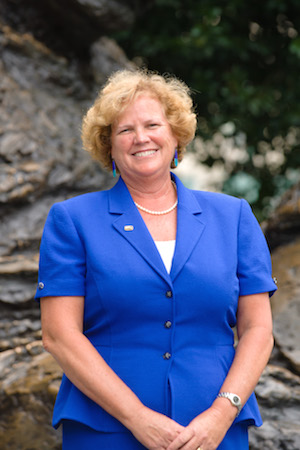 1. Anne Artz
1. Anne Artz
Albert Einstein Distinguished Educator Fellow
Department of Energy
Anne Artz is a 24-year veteran teacher who has taught grades 7th-12th in all areas of science. For the past eight years Artz has been the science department chair, the student government advisor, and an Advanced Placement Environmental Science Teacher at The Preuss School UCSD, a charter school in San Diego, California. In addition to teaching environmental science, Artz has taught AP Biology, Advanced Biology, middle school Life Science, and middle school general science. In addition to being a classroom teacher, Artz has five years of experience as a school administrator, having served as the assistant principal in both middle and high schools in the San Diego area. “I love science – everything about it. The study, the experimenting, the use of technology – all of those continuously remind me why I went into science in the first place. I want to pass that thrill, that excitement, onto my students.” As an Albert Einstein Distinguished Educator Fellow, Artz serves in the office of Congressman Paul Tonko.
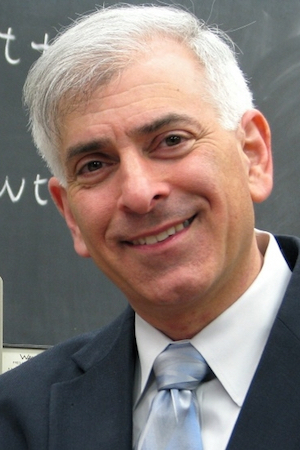 2. Dr. Matt Bobrowsky
2. Dr. Matt Bobrowsky
Adjunct Space Science Researcher, National Center for Earth and Space Science Education
Director of Special Programs, Delaware State University
Dr. Matt Bobrowsky is a nationally recognized science educator, receiving multiple teaching awards. He is the lead author of the Phenomenon-Based Learning books for teaching physical science. Matt teaches various scientific subjects, carries out scientific research, and engages in numerous public speaking events. Currently at Delaware State University, recent experience includes serving as Director of the Physics Demonstration Facility at UMCP, a collection of 1,600 science demonstrations. Matt has also developed science curriculum materials and presented countless workshops to teachers and the public. His educational presentations address topics such as the process of science, misconceptions in science, effective science teaching, and science vs. pseudoscience. His public presentations on astronomy are entertaining and educational. As an astrophysicist, Matt’s research includes astronomical observations with many telescopes, including the Hubble Space Telescope. His specialty is the study of planetary nebulae – clouds of gas expanding outward from aging stars.
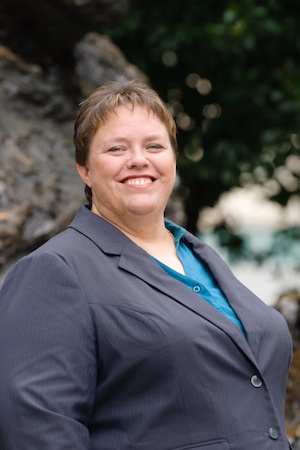 3. Barbara Buckner
3. Barbara Buckner
Albert Einstein Distinguished Educator Fellow
National Science Foundation
Barbara currently serves as an Einstein Fellow at the National Science Foundation in the Office of the Assistant Director for the Education and Human Resources Directorate. A lifelong educator, she has taught at Bradley Central High School in Cleveland, TN, and adjunct classes at Lee University and Bryan College. She received her Ph.D. in Mathematics Education from the University of Louisville doing quasi-experimental research on the impact of technology in a first year algebra class ,while studying the concept of functions on student achievement, and teacher behavior variables of planning, teaching, and assessing. Buckner’s high school classes were the first in the state of Tennessee to participate in NASA’s Mars Student Imaging Project (MSIP). Through MSIP students participate in standards based authentic scientific research, which is peer-reviewed by a NASA Scientist and published by Arizona State University. Buckner is a NASA Solar System Ambassador and a Master Teacher for NASA’s Airborne Research Experiences for Educators and Students Program.
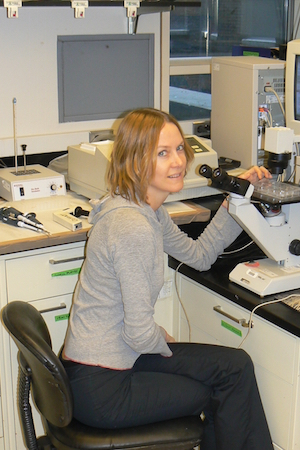 4. Dr. Kathy Conant
4. Dr. Kathy Conant
Assistant Professor, Georgetown University
Dr. Katherine Conant completed undergraduate studies in biochemistry at Cornell University, medical studies at Boston University School of Medicine, and residency training in adult neurology at Georgetown University School of Medicine. She is now involved in research and teaching in the Department of Neuroscience at Georgetown University. Her research efforts are focused on a family of molecular scissors (matrix metalloproteinases) that are released from neurons/glia and that may in turn influence communication between neurons. The overall goal is to better understand how these molecular scissors affect physiological and pathological changes in neurotransmission, learning, and memory.
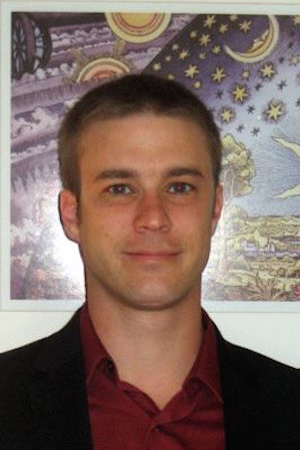 5. Dr. Dan Crooks
5. Dr. Dan Crooks
Postdoctoral Fellow, National Cancer Institute
National Institutes of Health
Dan Crooks is a member of the Urologic Oncology Branch at the NIH Clinical Center, where he is studying metabolic derangements in human kidney cancers, with the goal of identifying novel metabolic pathways that can be targeted by therapeutics. Dan completed a B.A. in Molecular Biology and an M.S. in Environmental Toxicology at the University of California at Santa Cruz, and earned a Ph.D. in Biochemistry from Georgetown University while performing research at the NIH on the molecular mechanisms of cellular iron homeostasis using mammalian red blood cell development and a human mitochondrial muscle disease as model systems. His long-term research interests lie in the pursuit of mechanisms underlying the altered metabolism and tissue specificity of human diseases.
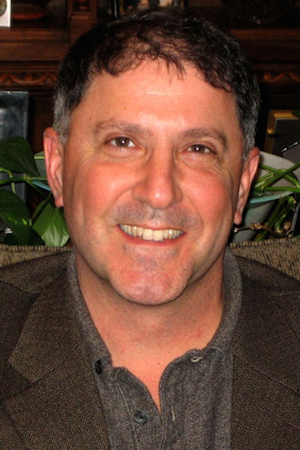 6. Dr. Jonathan D. Dinman
6. Dr. Jonathan D. Dinman
Professor, Department of Cell Biology and Molecular Genetics
Affiliate Professor Department of Chemistry and Biochemistry
University of Maryland College Park
Dr. Dinman employs a naturally occurring molecular mechanism called “programmed ribosomal frameshifting” to understand how cells translate the genetic code with high fidelity, and how this process can be subverted to regulate gene expression. His research impacts a wide range of fields, including development of novel biodefenses against highly pathogenic viruses, design and commercialization of RNA-based therapeutic delivery systems, molecular structure/function relationships, and revealing the underpinnings of diseases including leukemias, anemias, and brain disorders. He holds a Ph.D. in immunology and infectious diseases from Johns Hopkins University and an A. B. from Oberlin College in philosophy.
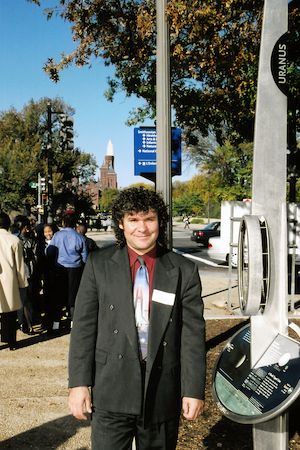 7. Dr. Jeff Goldstein
7. Dr. Jeff Goldstein
Program Director, Student Spaceflight Experiments Program (SSEP)
Center Director, Astrophysicist, National Center for Earth and Space Science Education (NCESSE)
Institute Director, Arthur C. Clarke Institute for Space Education
Dr. Jeff Goldstein is the creator of SSEP, and its Program Director. He is also the Center Director for the National Center for Earth and Space Science Education (NCESSE), and the Institute Director for the Arthur C. Clarke Institute for Space Education. Jeff is a nationally recognized science educator, and planetary scientist, who has dedicated his career to the public understanding of science and the joys of learning. He oversaw the creation of the Center’s national science education initiatives, including the Voyage National Program. He led the inter-organizational team that permanently installed the Voyage model Solar System on the National Mall in Washington, DC. He is a blogger at the Huffington Post, and writes Blog on the Universe. His planetary science research includes the development of techniques for measuring global winds on other planets using large telescopes on Earth. His research has produced the first direct measurement of the global winds above the clouds on Venus, and the first measurement of the global winds on Mars.
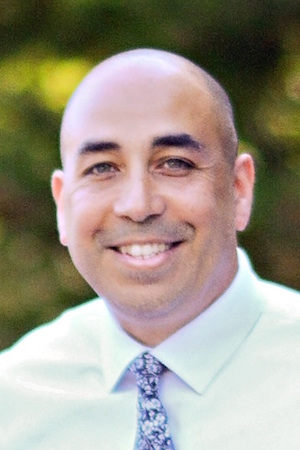 8. John Hamel
8. John Hamel
Assistant Fight Operations Manager, Student Spaceflight Experiments Program
Assistant Education Program Manager, National Center for Earth and Space Science Education (NCESSE)
John is the Assistant Education Program Manager at the National Center for Earth and Space Science Education. He provides logistics and coordination support for NCESSE’s various programs, including SSEP, Family Science Night and the MESSENGER Educator Fellowship program. As the SSEP Assistant Flight Operations Manager, John provides logistics support for SSEP, including website content development, coordination support for the annual SSEP National Conference, organization of SSEP delegations attending a mission launch, and overseeing the Mission Patch design competitions for each SSEP Mission. John also has extensive experience with non-profit education organizations and a certified association management group. He spent the early years of his career working directly with pre-school and school-aged children.
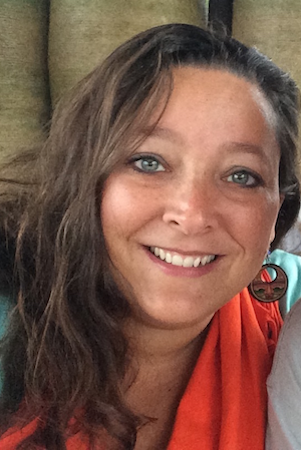 9. Stacy Hamel
9. Stacy Hamel
Flight Operations Manager, Student Spaceflight Experiments Program
Education Program Manager, National Center for Earth and Space Science Education (NCESSE)
Stacy Hamel is the Flight Operations Manager for the Student Spaceflight Experiments Program overseeing all day-to-day activities from the time flight proposals are submitted by the communities through experiment return to Earth. Her previous experience at NCESSE includes co-directing the Voyage National Program – a national public education and outreach program that is installing replicas of the Voyage Scale Model Solar System located on the National Mall in Washington, DC, in communities worldwide. Stacy also co-directed many of the Center’s other Educational Programs including Journey through the Universe – a national initiative that engages entire communities—students, teachers, families, and the public—using education programs in the Earth and space sciences and space exploration that inspire and educate. Over 200,000 grade preK-12 students have participated in Journey through the Universe.
10. Dr. Ann Hobbs
Biochemist and Patent Attorney (retired)
Ann Hobbs holds a Ph.D. In Biophysics from the University of Maryland at Baltimore, and devoted a number of years to biochemical and physiological research on cation transport across cell membranes. A large part of her scientific career was spent at the National Institutes of Health and the University of Maryland Medical School. Dr. Hobbs subsequently earned a J.D. from the University of Maryland School of Law and became a patent attorney, her legal practice focusing on medical, biotechnological and pharmaceutical inventions. She is a former partner of Venable LLP, Washington, D.C.
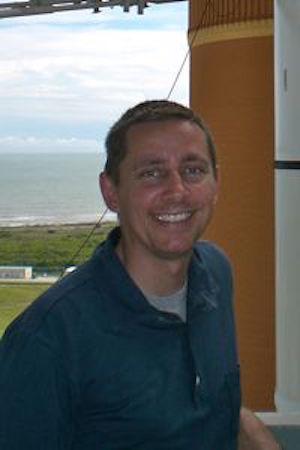 11. Michael Hulslander
11. Michael Hulslander
Adjunct Space Science Educator, National Center for Earth and Space Science Education (NCESSE)
Manager of Onsite Learning, Smithsonian National Air and Space Museum
Michael is responsible for science education at the Smithsonian’s National Air and Space Museum. He also manages the How Things Fly gallery, Moving Beyond Earth gallery, the Public Observatory Project and the Explainers Program. How Things Fly teaches visitors about the science of flight. Moving Beyond Earth is an immersive exhibition placing visitors “in orbit” during the shuttle and space-station era. At the Public Observatory visitors explore craters on the Moon, spots on the Sun, the phases of Venus, and other wonders of the universe using a 16-inch telescope. The Explainers Program gives high school and college students the chance to work at the National Air and Space Museum. Michael has worked in museums and zoos for more than 25 years, researching, writing, presenting and evaluating science programs for school groups, families and the general public.
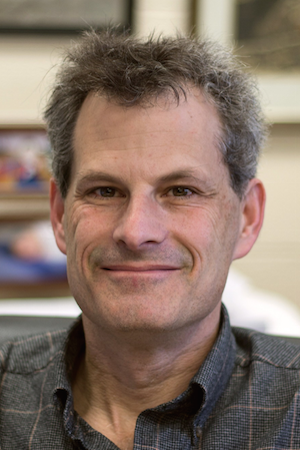 12. Dr. Jason Kahn
12. Dr. Jason Kahn
Associate Professor, Dept. of Chemistry and Biochemistry
University of Maryland College Park
Jason Kahn is a molecular biologist and/or biophysical chemist who studies the structure and dynamics of DNA and protein-DNA complexes. His work has applications in DNA primer and probe design, DNA/RNA packaging in transfection, DNA looping in gene expression, and the construction of protein-DNA nanostructures. He teaches a wide variety of chemistry and biochemistry classes that connect fundamentals of thermodynamic and kinetics to biology and biotechnology. He earned an A.B. from Harvard and a Ph.D in biophysical chemistry from UC Berkeley, and he was a postdoctoral fellow at Yale before joining the University of Maryland.
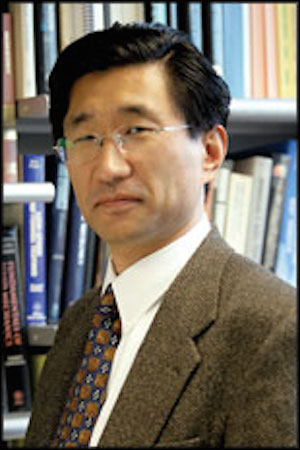 13. Dr. Jungho Kim
13. Dr. Jungho Kim
Professor of Mechanical Engineering, University of Maryland
Prof. Jungho Kim is a Professor of Mechanical Engineering at the University of Maryland. His research interests include phase change heat transfer process as applied to electronic cooling; investigation of fundamental heat transfer mechanisms in boiling and spray cooling in Earth and microgravity environments; and high temperature radiation absorbance measurements. Prof. Kim has extensive experience in microgravity research, including his role as the principal investigator of the Boiling eXperiment Facility – Microheater Array Boiling Experiment (BXF MABE), which flew on the International Space Station in 2011.
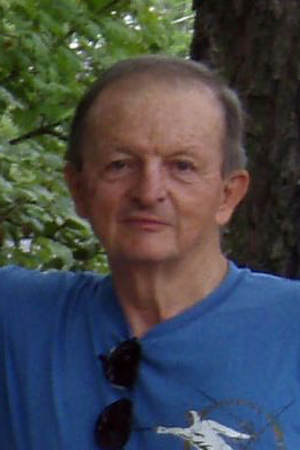 14. Dr. David Livengood
14. Dr. David Livengood
Dr. David Livengood is a biophysicist with a Ph.D. in Physiology. He has an extensive research background in biophysics in institutions such as the University of Maryland School of Medicine in Baltimore, Maryland, and the Armed Forces Radiobiology Research Institute in Bethesda, Maryland, where he served as the chair of the Physiology Department and the Applied Cellular Radiobiology Department.
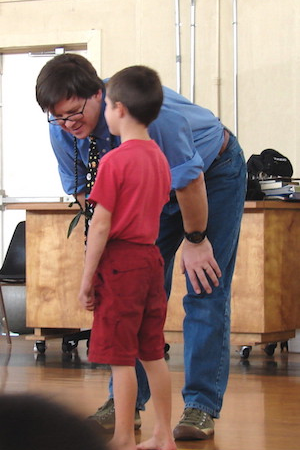 15. Dr. Tim Livengood
15. Dr. Tim Livengood
Adjunct Space Science Researcher, National Center for Earth and Space Science Education
Research Scientist, Department of Astronomy, University of Maryland
Dr. Tim Livengood is a senior advisor to SSEP and adjunct research scientist with the National Center for Earth and Space Science Education. He is a research scientist with the University of Maryland Department of Astronomy and works at NASA’s Goddard Space Flight Center. Tim has been a presenter and team leader for the Center’s public and school programs and has visited hundreds of classrooms. His current research uses a neutron-detecting instrument on the Lunar Reconnaissance Orbiter to measure deposits of water on the Moon, and uses infrared spectroscopy from telescopes on Earth to measure composition, temperature, and wind velocity in the atmospheres of other planets.
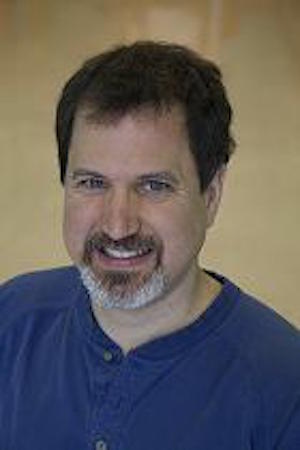 16. Dr. David Loeb
16. Dr. David Loeb
Associate Professor, Oncology and Pediatrics
Johns Hopkins University School of Medicine
Dr. David Loeb has been a pediatric oncologist since 2000. His clinical interests are diverse – he is a member of the bone marrow transplant team, and Director of the Musculoskeletal Tumor Program. In addition to clinical work, he also runs a research laboratory with several active areas of research. A core research program investigates the role of a transcription factor known as WT1 in the biology of sarcomas – tumors of connective tissue. The leading hypothesis is that WT1 regulates the expression of a broad array of pro-angiogenesis genes, and WT1 therefore promotes tumor growth through increasing the blood supply feeding cancer cells. The lab is currently designing a fluorescence-based high throughput screen for small molecule WT1 inhibitors that might be of use in treating WT1-expressing solid tumors. Another important area of research is the identification and targeting of Ewing sarcoma stem cells, with research currently focusing on a) the role of the RNA helicase DDX3 in Ewing sarcoma biology, and b) the role of the Wnt signaling pathway in regulating the growth of Ewing sarcoma and osteosarcoma.
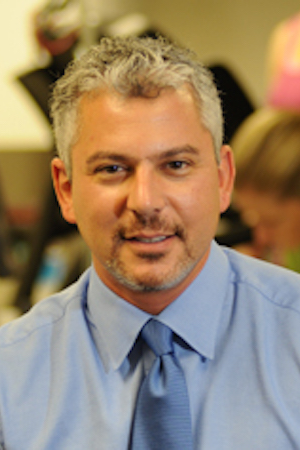 17. Dr. Todd Miller
17. Dr. Todd Miller
Associate Professor, George Washington University
Prof. Todd A. Miller is an Associate Professor in the Department of Exercise Science at the George Washington University. As a certified strength and conditioning specialist and a USA Level 1 weightlifting coach, Professor Miller brings a tremendous amount of field experience to his research into muscle physiology. His early focus on the influence of strength training on athletic performance evolved into an interest in how human beings respond to long-term space travel. To learn more, Dr. Miller has used animal models to investigate the deleterious effects of microgravity on physiology, and how those effects can be countered, and participated in an ongoing NASA project that included flying an experiment on the ill-fated Columbia shuttle in 2003.
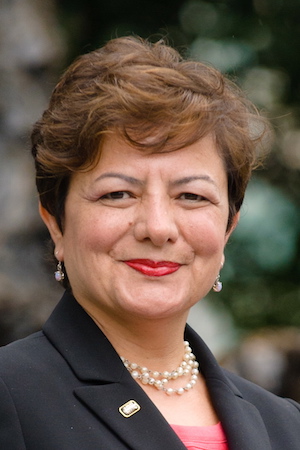 18. Zovig Minassian
18. Zovig Minassian
Albert Einstein Distinguished Educator Fellow
Department of Energy
A multilingual educator with over twenty years of experience, Zovig Minassian has taught biology, chemistry, astronomy, health, physical and life sciences, as well as algebra and geometry, for grades 7-12. Currently, she teaches at Herbert Hoover High School in Glendale, California. In addition to classroom teaching, Ms. Minassian engages her students in hands-on experiences and empowers all students to succeed in science through learning to think scientifically, using their reasoning and critical thinking skills to solve everyday problems as well as deciding the validity of information available from all kinds of sources. She is also dedicated to reducing the achievement gap among her students and providing them with several opportunities to excel, by using a multitude of strategies to create an atmosphere of engagement and cooperation. Ms. Minassian will spend eleven months as an Einstein Fellow working at the Department of Energy’s Office of Science.
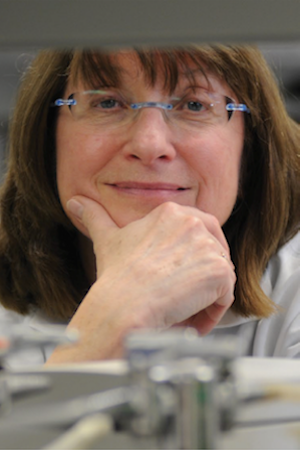 19. Dr. Sally Moody
19. Dr. Sally Moody
Professor of Anatomy and Regenerative Biology
George Washington University School of Medicine and Health Sciences
Dr. Moody has directed a biomedical research laboratory focused on the development of the nervous system for over 30 years. Her lab has studied numerous aspects of neural cell development in a number of animal models. Her favorite, however, is the frog Xenopus because of their large eggs and rapid development, the ease of performing gene gain- and loss-of-function in specific tissues, and the applicability of the information we gain to other vertebrates, including humans, due to a high degree of genome homology. Currently there are two major projects in the laboratory. First, we are discovering the role of a neural transcription factor, FoxD4, in the formation of neural stem cells. Second, we are studying what genes are required for the proper formation of the sensory organs of the head. In frogs, fish, chicks and humans, the Six1 gene is pivotal in the development of these organs.
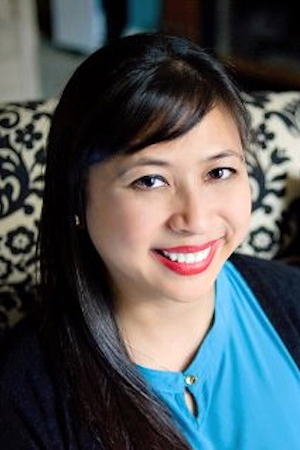 20. Anthonette Pena
20. Anthonette Pena
Program Director, Albert Einstein Distinguished Educator Program
Triangle Coalition for STEM Education
Anthonette Peña is the Program Director for the Albert Einstein Distinguished Educator Fellowship Program at the Triangle Coalition for STEM Education. Throughout her career, Peña has worked to increase the number of underrepresented groups, specifically minorities and females, within the STEM pipeline and to encourage students to consider STEM careers. While teaching 8th grade science in DC Public Schools (DCPS), she served at the SSEP Community Program Director. Prior to teaching in DCPS she served for two years as an Einstein Fellow at the National Science Foundation. Peña, a National Board Certified Teacher in Early Adolescence Science, was a Presidential Award in Excellence in Mathematics and Science Teaching (PAEMST) State Finalist in 2012. She earned her BA in Liberal Studies from Cal Poly, San Luis Obispo and an MS in Education in Teaching English to Speakers of Other Languages from Nova Southeastern University.
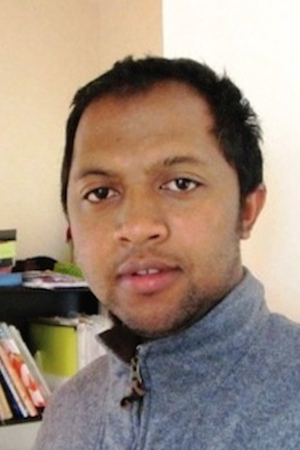 21. Dr. Sanda F. Rajaonson
21. Dr. Sanda F. Rajaonson
Université Libre de Bruxelles, Belgium and University of Antananarivo, Madagascar
Dr. Sanda Rajaonson received his Ph.D. in Biological Sciences from the Université Libre de Bruxelles, Belgium and the University of Antananarivo, Madagascar through a joint program between the two institutions. His doctoral thesis focused on the inhibition of virulence gene expression in Rhodococcus fascians and Pseudomonas aeruginosa, as a culmination of years of research on the virulence of pathogenic bacteria. During his career, he has developed his interest in finding alternatives to battle the problem of multi-drug resistance in pathogenic bacteria. His next step is to continue his research in the areas of microbial genetics, host-microbe interaction and cell-to-cell communication in bacteria in order to improve his understanding of the molecular mechanisms of bacterial pathogenesis.
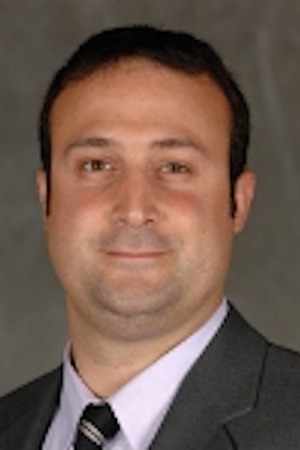 22. Dr. Alex Theos
22. Dr. Alex Theos
Assistant Professor, Georgetown University
Alex Theos is an Assistant Professor at the Department of Human Science in the School of Nursing And Health Studies at Georgetown University. His research interests include the biogenesis of specialized organelles, focusing on the intracellular membrane trafficking pathways. Currently, his research lab is working to understanding the cell biology of the GPNMB protein, which is associated with diverse pathologies including melanoma and pigmentary glaucoma.
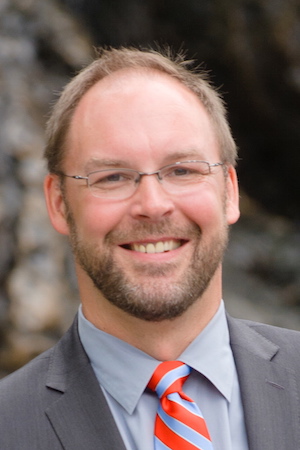 23. David Thesenga
23. David Thesenga
Albert Einstein Distinguished Educator Fellow
National Science Foundation
David Thesenga has been teaching physics, chemistry, and the earth sciences for 16 years to both middle- and high-school students and is currently teaching 8th grade physics, engineering and chemistry at Lake Forest Country Day School in Illinois. He believes that not all people will become active research scientists, but all individuals are in fact scientists. Students should receive a skill set in STEM which will allow them to be effective members of society; read and interpret basic scientific information, graphs, and tables, the like of which you might find in a newspaper; a desire to communicate information and discoveries; and a heightened curiosity about the world around them, the way things work, and why they work. As a 2013/14 Albert Einstein Distinguished Educator Fellow, Thesenga is placed at the National Science Foundation in the Directorate for Geosciences. He is currently working on using 3D printing of topographic landscapes to increase student understanding and retention.
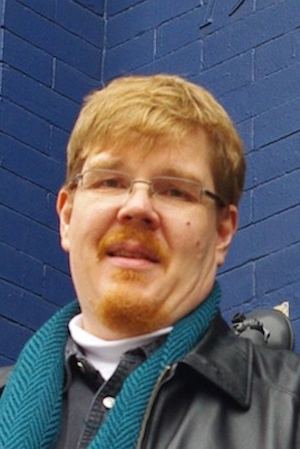 24. Dr. Harri Vanhala
24. Dr. Harri Vanhala
Adjunct Space Science Researcher, National Center for Earth and Space Science Education
Senior Scientist, Global Science and Technology, Inc.
Originally from Finland, Harri received his Ph.D. in astronomy from the University of Oulu. Harri has worked in various research and education organizations in the Unites States for 20 years. He is a Senior Scientist at Global Science and Technology, where he works with NASA’s Space Technology and Human Exploration and Operations Mission Directorates to help select new space technology projects for development and experiments for flight to the International Space Station. His science research focuses on the use of computer simulations to investigate the origin of the Solar System and the formation of stars and planetary systems across the Universe. His science education activities have included hundreds of visits to grade K-12 classrooms, conducting teacher training workshops, teaching college courses, and presentations to families and the public—he is one of the presenters for the Center’s Family Science Night program at the Smithsonian National Air and Space Museum.
